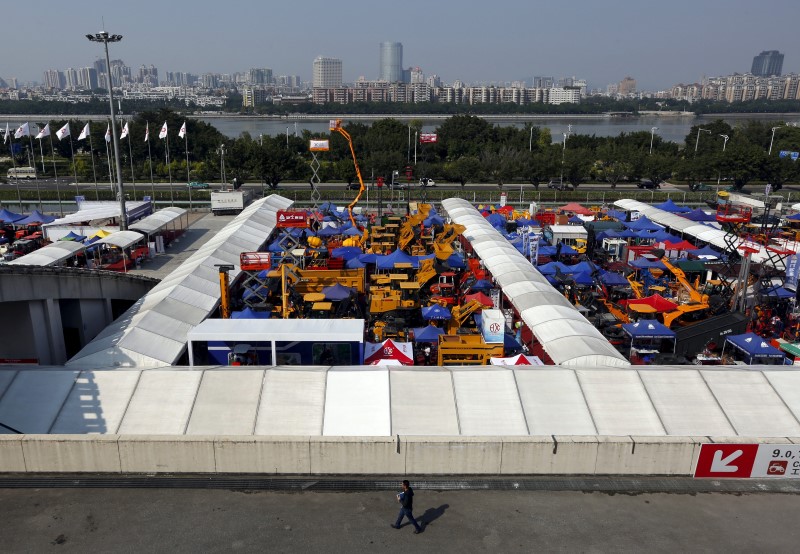By Pete Sweeney and Winni Zhou
BEIJING (Reuters) - China's trade figures disappointed analyst expectations by a wide margin in October, reinforcing views that the world's second-largest economy will have to do more to stimulate domestic demand given softness in overseas markets.
While Beijing has repeatedly cut interest rates, the latest data showing an eighth monthly drop in net trade indicates persistent weakness in demand at home and abroad.
October exports fell 6.9 percent from a year ago, down for a fourth month, while imports slipped 18.8 percent, leaving the country with a record high trade surplus of $61.64 billion, the General Administration of Customs said on Sunday.
Economists polled by Reuters had expected dollar-denominated exports to fall 3.0 percent and imports to decline 16.0 percent, an improvement over September's drop of 3.7 percent and 20.4 percent, respectively.
But the weak export reading shows that China might be getting less of a boost than hoped from overseas holiday shopping, while falling commodity import volumes highlight stubborn weakness in demand from key sectors like real estate and construction that Beijing has been trying to revive.
China's services sector, which has been one of the few bright spots in the economy, also lost some steam in October.
"We see that the trade will unlikely turn around the momentum in the near term, and the RMB exchange rate will be under downward pressure especially as Fed signals to hike soon," Commerzbank (DE:CBKG) China economist Zhou Hao said.
EXPORTS TO DEVELOPED ECONOMIES WEAKEN
The decline in October exports was led by trade with developed economies, according to customs data.
Shipments to the United States dipped 0.9 percent on the year. Exports to the European Union dropped 2.9 percent and exports to Japan fell 7.7 percent.
Combined exports and imports are down 8.5 percent for the first 10 months of the year, well below the full-year official target for growth of 6 percent.
Last week, the Ministry of Commerce said the value of China's exports this year was likely to stay similar to 2014 levels, while imports could drop sharply in the fourth quarter.
For 2016, the ministry expects to see steady growth in combined exports and imports as policy measures to support the trade sector take effect.
POLICY MEASURES
In order to lower social financial costs for firms, the central bank cut interest rates in late October for the sixth time in less than a year, and again reduced the amount of cash that banks must set aside as reserves.
It has also guided the yuan into weaker territory against the dollar, but few believe Chinese exporters would benefit from anything short of a drastic devaluation.
In fact, Beijing wants to move away from its dependence on low-end export manufacturing to drive growth and move up the value chain into high-tech products and services. Keeping the exchange rate relatively strong is seen by many economists as a way to push the pace of upgrade after decades of coddling.
Louis Kuijs of Oxford Economics noted that the yuan remained far stronger than it was a year ago even after the depreciation.
"China's trade weighted exchange rate was still 8.5 percent stronger than it was a year ago in September, and by itself this is hurting exporters, although weak global trade growth is a bigger problem."

The country's economic growth dipped to 6.9 percent in the third quarter, dropping below the 7 percent mark for the first time since the global financial crisis.